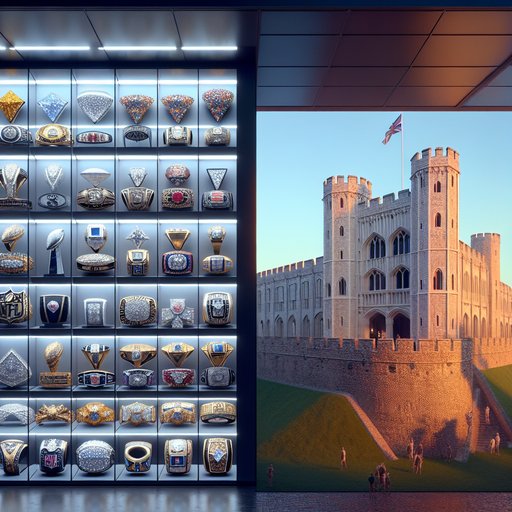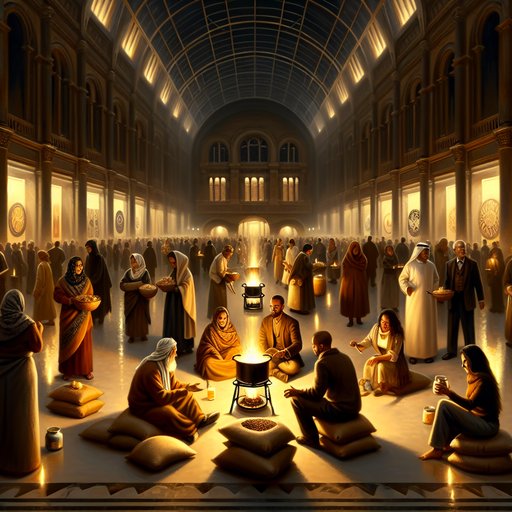
Tom Brady’s new Las Vegas museum arrives glittering with promise and provenance, a showroom where Super Bowl rings sit alongside Elvis suits under the bright theology of spectacle [2]. It’s an irresistible headline—“has it all”—and a useful mirror held up to our era’s favorite parlor trick: converting celebrity aura into cultural value, and cultural value into market price [2]. Across the Atlantic, a very different headline announces the reopening of Norwich Castle’s majestic medieval keep after restoration, a civic project that treats history as a shared endowment rather than a speculative asset [1]. Between these two announcements lies the crucial question for a culture hooked on hype yet hungry for meaning: what, precisely, are we rewarding when we reward culture—and how might price be tuned to public enrichment rather than just private excitement?
Let’s take the Vegas museum as a cultural lens, not a gotcha. A museum of rings and rhinestones is a parable of the attention economy, where scarcity is staged and desire is choreographed. The show is the story, and the story is a ledger entry. The headline promises abundance—“has it all”—because the promise of totality is itself the product [1].
When curation blends with branding, we must ask: are we being moved, or merely mobilized? The draw is obvious. Super Bowl rings and Elvis suits are lodestars in America’s constellation of myth, glinting with the sweat of games and the glamour of stages [1]. Objects like these are biographies in miniature, the condensed residue of careers we watched unfold in high definition.
They’re also near-perfect vehicles for financial storytelling: discrete, coveted, comparably tradable, their value buoyed by the same narrative hydrogen that inflates any bubble. The line between commemoration and commodification thins when applause can be securitized. Consider the counterpoint offered this week by a medieval keep that has reopened after restoration at Norwich Castle [2]. That headline signals a different contract between the public and its patrimony: long timelines, collective stewardship, the slow, unglamorous craft of maintenance [2].
No one expects a sprint of speculative upside from a fortified stone cube; its return is measured not in flips but in field trips. The restoration frames value as intergenerational utility—archives unlocked, education enhanced, a city’s sense of self fortified—as opposed to the adrenaline of the hot new thing. Speculation thrives on velocity and asymmetry. It loves icons because icons condense complexity into a tradable signal, a ticker symbol in fabric and gold.
When culture is priced like options—premium now for a possibility later—we mistake volatility for vitality. Hype’s favorite grammatical mood is the future perfect: this will have meant something. But meaning is slow-cooked; resonance thickens with context, not with countdown clocks. This is not to sneer at the objects in Vegas.
In the right light—historical, human, labor-aware—they can widen empathy. A ring can be a syllabus in teamwork, risk, and recovery; a suit can teach design, race, and rebellion. If the museum presents these artifacts as portals rather than trophies, it could convert celebrity into civic capital, turning spectators into citizens. If, however, the frame is simply prestige under glass, we’ve built a shrine to scarcity where there might have been a school for imagination [1].
So how do we align price with public enrichment? First, require radical transparency: publish every exhibit’s interpretive goals alongside its provenance and insurance valuation, so audiences can weigh learning against lustre. Second, peg a public-interest dividend to ticket revenue—a standing commitment that a fixed slice funds free admission days, neighborhood education, and traveling loans to underserviced communities. Third, adopt time-bound deglitzing: for each block of spectacle programming, pair a block of context-driven programming that foregrounds craft, labor, and social impact.
Fourth, experiment with community co-ownership: municipal cultural bonds or membership cooperatives that let the public hold a stake in the institution’s successes, turning spectatorship into stewardship. Finally, enshrine curatorial independence from marketing by charter, as heritage institutions must to avoid becoming billboards with climate control [2]. Markets aren’t the villain; opacity is. Price can be a decent servant when it’s forced to reckon with outcomes beyond returns: educational hours delivered, first-time museumgoers welcomed, partnerships with schools measured in lesson plans rather than press releases.
A dynamic pricing model that gets cheaper as attendance rises during school-day blocks could signal that learning, not scarcity, is the institution’s north star. A disclosure dashboard could report the ratio of programming dollars spent on context versus spectacle. These are not bureaucratic burdens; they are design choices that make values legible. Here’s the hopeful horizon.
The same week that Las Vegas stages a new pantheon of Americana [1], Norwich Castle quietly reopens a medieval keep after restoration, reminding us that cultural wealth is healthiest when it compounds slowly and is shared widely [2]. If the Brady museum embraces transparency and co-creation, its rings and suits can be more than lures; they can be ladders into deeper stories about craft, community, and continuity. The next generation doesn’t need fewer icons; it needs icons with onramps. Build those onramps—funded by dividends to the public, protected by independent curation, paced by context—and we can finally tether market heat to human heat, pricing wonder not by how loudly it sparkles, but by how far it spreads.
Sources
- From Super Bowl rings to Elvis suits: Tom Brady's new Las Vegas museum has it all (Marca, 2025-08-20T03:54:49Z)
- Norwich Castle’s Majestic Medieval Keep Reopens After Restoration (Forbes, 2025-08-19T14:22:47Z)







































